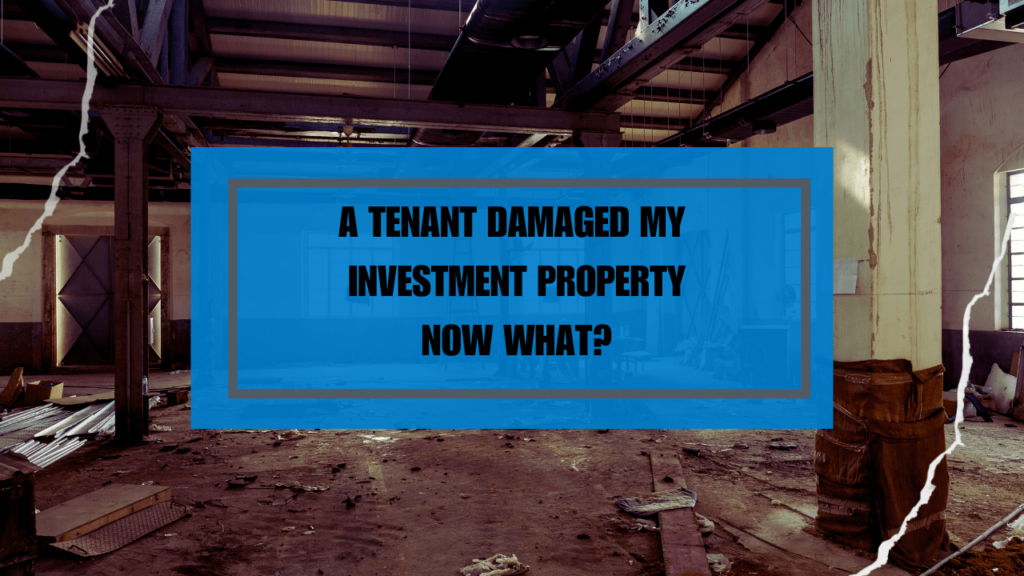A Tenant Damaged My Palm Desert Investment Property, Now What?

Property damage is a major concern for a number of the Palm Desert rental property owners we talk to. You can screen your tenants well, but you never really know who is moving into your property. You could have otherwise good tenants move out and then find thousands of dollars of property damage left behind.
We don’t like to think about everything that could possibly go wrong, and as professional Palm Desert property managers, we work hard to prevent those worst case scenarios. Usually, we turn properties over between tenants with minimal damage. We find if there is something that needs to be repaired and is beyond the scope of normal wear and tear, it’s an easy fix and inexpensive. We deduct those costs from a tenant’s security deposit.
If a tenant does cause damage to your Palm Desert investment property, you’ll need to understand the steps that are available to you to recover those costs. We’re talking about what to do in this blog, and we’re also sharing some things you can do to avoid getting into a position like this. No one wants to walk into their investment property and find large holes in the walls and the floors or broken appliances in the kitchen. It’s expensive, it’s frustrating, and it’s hard not to take such damage personally.
Offer a Pre-Move Out Inspection
California requires a pre-move out inspection when a tenant is preparing to depart. A lot of landlords hate that they have to do this, and it’s rare that a tenant asks for such an inspection.
We recommend that you encourage it. When your tenants are willing to have you inspect the property with them before they move out, you can get an ideal of what kind of damage and wear and tear you’ll find. It will prepare you for what you’ll spend and what you’ll need to coordinate during the turnover period. If you encounter a lot of damage, it will also prepare you for that and give you the opportunity to talk with the tenant about what you’ll expect from them.
Unfortunately, if a tenant is leaving behind a lot of problems and potential damage, it’s likely they’ll decline your offer of this pre-move out inspection. Always offer it, however, and encourage your tenants to accept it.
Document and Repair the Damage to your Palm Desert Investment Property
As soon as your tenants have moved out, your job is to get inside the property and conduct a complete inspection. Document the damage you find in detail, with photographs and notes. Compare the condition now to the way the property looked before the tenant moved in. When you make a claim for damages, you’ll need to be able to document what you’ve had to repair.
Always have your best vendors and contractors lined up to complete the repairs that are needed. Not only do you want to send a complete itemized statement and a bill for what the tenant still owes you; you also want to rent the property out again as quickly as possible. A long vacancy period in addition to extra repair costs will be expensive.
Make the repairs and pay for them, even though you know you’re dealing with tenant damage and that your tenants are ultimately responsible. You don’t want to hold up the repair and turnover process, waiting for that tenant to do what’s right. Move ahead and document every cost.
Withhold the Tenant’s Security Deposit
The security deposit you collected before your tenant moved in is held in case there is damage to the property that goes beyond normal wear and tear. After the work has been completed and the cost has been documented, you can let your tenants know that you’re keeping all or most of the security deposit.
California has pretty strict security deposit laws. Make sure you get the itemized statement of deductions back to your tenant within 21 days. You’ll want to include copies of receipts, invoices, and statements that reflect what you spent. You may need to document the damage, so make sure you have photos ready to share if necessary.
When there’s excessive damage, you probably aren’t returning any of the deposit. You still need to send that accounting of damages. Highlight the amount that is still owed by the tenant, and provide a deadline by which you expect payment to be made.
You might get a payment right away. In some cases, tenants will want to protect their reputation and their ability to maintain a positive rental history. However, this is not common. Usually, tenants will ignore your demands for payment and your attempt to collect what they owe. Unfortunately, you have very little leverage since they’ve already moved out of your property.
Collections and Tenant Damage
Depending on how much the tenant owes you, it’s possible to continue trying to collect from them. You can hire an attorney to help you get what is owed. You can also try to sue the tenant in small claims court for those damages that are still owed to you.
That’s likely to take a lot of your time and resources, however. Decide whether that makes financial sense. No one wants to spend money needlessly, especially when it should be the tenant’s responsibility, but you have to protect yourself and you have to move forward.
Preventing Tenant Damage: Screening and Insurance
Protect yourself and your property by doing everything you can to avoid this type of tenant damage. Rigorous screening practices are a good start. Check every applicant’s credit for money that’s owed to former landlords or apartment communities. Talk to former rental references.
You can also require renter’s insurance. This will protect you from any of the tenant’s liability when they’re renting your home.

We recommend that you develop and maintain a good relationship with your tenants as well.
It’s impossible to predict property damage, and always difficult to deal with. Instead of getting frustrated, work with Palm Desert property managers. We can make sure tenants follow the terms of their lease and protect the condition of your home. Contact us at Xepco Properties to hear more.

